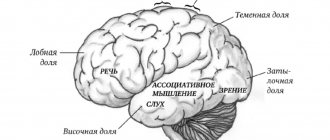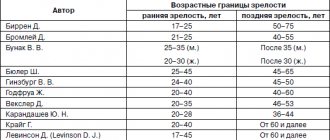Definition of the concept
In psychology, a crowd is a collection of people that can be compared to an animal herd or a flock of birds. Mass protests in history have most often been destructive. Crowds attended public executions, gladiatorial fights, and the honoring of emperors. The essence remains the same today, only the external surroundings have changed.
Mass gatherings cannot exist without control, otherwise they can harm others and even themselves. They were skillfully used by politicians and religious leaders. But only in the 19th century did the study of this socio-psychological phenomenon begin. Only then did humanity realize how dangerous the masses can be. And the basis was the book of the French psychologist and sociologist Gustave Le Bon. It's called "Mass Psychology."
Psychic contagion
The crowd refers to spontaneous large groups; its activity is based on emotions. People have no common goal, they are just attracted to a spectacle or an object of worship (rejection). The cluster is characterized by several properties: exaltation and emotionality. And they lead to two important effects - mental infection and loss of control.
The first refers to action to avoid danger. In primitive societies, the crowd believed that the collective mind was stronger than the individual. Although a person has long become independent, under the influence of emotions he can be influenced by society.
Together with others, the person becomes more aggressive, bolder, and more reckless. She can do things that she would never dare to do herself. And if the people are led by a feeling of fear, then the mass will sweep away everything in its path.
Characteristics of different types of crowds
There are simple, expressive, conventional and acting crowds. One type of crowd can be transferred to another.
A simple or casual crowd is a gathering of people seeking information about events or phenomena that they happen to observe. Usually it is formed by people who need thrills, impressions (RTA). This is not dangerous, although it does cause inconvenience and trouble. At the same time, it can become an active, aggressive crowd. Sometimes such a crowd commits lynching.
An expressive crowd is a group of people who collectively express feelings such as joy, sadness, anger, etc. (fans of rock musicians, pop stars). Such groups often include spectators who attend sporting events and express their joy at the success of athletes, as well as thrill seekers under the influence of gambling and drugs. Festive processions at major events, funerals and other processions have an expressive communal character. The Department of Internal Affairs pays special attention to expressive crowds at funerals of people killed in accidents, disasters, etc.
Regular crowds form, for example, at sporting events. The fans in the stadium are rioting like never before. “Fans” pose a real threat to public safety. As a rule, the majority of fans are not just sports fans, but people who feel a sense of attachment to one of the teams, usually local.
Crowds may form at commercial establishments selling high-demand goods; at advance ticket offices selling tickets to stadiums, sporting events, entertainment performances, transport, etc. In its extreme antisocial manifestation, the current crowd of extortionists is nothing more than looters who have settled in the front line, in the war zone, in the Chernobyl accident zone.
Reckless acts are characterized by the highest degree of emotional arousal and are a particularly serious type of illegal behavior. The behavior of an active aggressive crowd is most harmful when it takes on the character of mass riots (fans, members of hostile groups and other communities carrying out mass anti-social actions; national liberation movements, unauthorized rallies, anti-racist protests, etc.).
Crowd Composition:
- The core of the crowd or instigators are the subjects whose task is to form the crowd and use its destructive energy for their own purposes.
- crowd members are subjects who joined the crowd because they identify their value orientations with the direction of the crowd. They are not instigators, but are within the sphere of influence of the crowd and actively participate in its actions. Aggressive individuals pose a particular danger because they join the crowd only for the opportunity to discharge their neurotic, often sadistic tendencies.
- those who deceive themselves with the best intentions also join the crowd. These subjects join the crowd because they misperceive the environment, for example, because they are guided by a misunderstood principle of justice.
- commoners join the crowd. They don't show much activity. They are attracted to excess as an exciting spectacle that brings variety to their boring, dull existence.
- highly suggestible people find a place for themselves in the crowd, succumbing to the general infectious mood. They surrender without resistance to the power of spontaneous phenomena.
- crowd members are also simply curious and watching from the sidelines. They do not interfere with the course of events, but their presence increases the mass character and enhances the influence of crowd elements on the behavior of participants.
Losing control
Loss of control is directly related to mental infection. Increased emotionality is what blocks a person’s consciousness. The individual no longer controls his behavior. Psychologists call this effect clouding of consciousness. A person ceases to be an individual, he turns into a spontaneous organism. And it is controlled by collective emotions, which the leader skillfully uses.
An example of such behavior can be a state of passion. But in this case, a person shows unprecedented strength and is able to save those around him and sacrifice himself. And the surge of emotions that the crowd generates leads to dangerous consequences. Indeed, in a mass gathering, it is not one person who loses control over the mind, but tens or hundreds of people.
Crowd Education
There is always a reason for the emergence of masses, although they are considered a spontaneous group. There are one or more individuals who become leaders. But often the crowd gets out of their control and begins its own active “life”.
Organizing and warming up a cluster is not difficult, but managing it is not easy. A group of people consists of several main layers:
- instigators;
- suggestible personalities;
- random people;
- hooligans.
The instigators or leaders are the core of the crowd ; they are the ones who gathered it to achieve their own goals. The second layer is people who are easy to inspire something. They quickly become heated and lose control and succumb to the collective mood. These are exalted individuals who create a certain atmosphere of the masses.
Random passers-by have an indifferent or negative attitude towards the crowd. These are occasional crowds, but they too fall under the influence, although they don’t even notice it. Hooligans are considered the most dangerous part. These are antisocial and aggressive individuals, determined to satisfy their cruelty.
Features of the crowd in psychology
In the case of combining small groups, which consist of indignant individuals, into a sufficiently large group, the likelihood that spontaneous behavior will manifest itself in a certain way increases. It can be aimed at expressing experienced feelings, assessments and opinions, or at changing a situation through action. Most often, it is the crowd that acts as the subject of such spontaneous behavior.
The crowd as a subject of mass forms of non-collective behavior is:
- public, including a large group of people (arises on the basis of common interests, often without corresponding organization, but always in a situation affecting something common and allowing rational discussion);
- a contact, outwardly disorganized community that acts extremely emotionally and unanimously;
- several individuals who make up a large amorphous group and for the most part do not have direct contacts with each other (connected by any common or constant interest).
Help with student work on the topic of Crowd Psychology
Coursework 450 ₽ Essay 220 ₽ Test paper 200 ₽
Get completed work or consultation with a specialist on your educational project Find out the cost
The last group can include mass hobbies, mass hysteria, mass migrations, mass patriotic or false-patriotic frenzy.
Within the framework of mass forms of non-collective behavior, unconscious processes are of great importance. Based on emotional arousal, spontaneous actions occur in connection with some impressive events. They are able to affect basic human values (for example, the fight for one’s interests and rights).
Historical examples of mob action might include:
- “copper” and “salt” riots of the Russian poor;
- rebellious performances of the English “Luddists”, etc.
The main psychological mechanism for the formation of a crowd and the development of its specific qualities is a circular reaction. It can be represented as an increasing mutually directed emotional contagion. This also includes rumors.
Stages of emergence
Since people in a crowd are practically unrelated to each other, there is always a conditional reason for its appearance. Usually this is a phenomenon that attracts attention - speeches, concerts, football matches.
The masses obey certain psychological laws and go through stages of education:
- Creation of the kernel.
- Information stage.
- A jump in attention.
- Activation.
The formation of the nucleus can be different - spontaneous or conscious. In the first case, the masses are controlled by emotionally unstable people, and in the second by individuals with specific goals. At the information stage, the main feature of the crowd manifests itself - a feeling of herding. A person quickly absorbs the transmitted data and emotions, and arousal begins to grow.
At the third stage, awareness or change of the object of attention occurs. With conscious behavior, people base their actions around what is beneficial to them. And then there comes a moment when the expressive crowd can no longer restrain themselves. The masses destroy everything around them, show aggression, and become uncontrollable. Sometimes the stages of formation of clusters are not clearly expressed. Sometimes they appear and disintegrate very quickly.
Stages of crowd formation
First of all, the core of the crowd is formed. The emergence of a crowd does not always go beyond the cause-and-effect relationships of social phenomena, the awareness of which is not always spontaneous. Despite the fact that one of the essential characteristics of a crowd is represented by the random composition of the individuals who form it, sometimes its formation begins from a certain core. Its leading link is considered to be the instigators.
Have questions about this topic? Ask a question to the teacher and get an answer in 15 minutes! Ask a Question
The initial core is formed under the influence of rationalistic considerations, defining very real goals. But subsequently it grows like an avalanche and spontaneously. The crowd is growing, absorbing people who, at first glance, had nothing in common with each other before.
A crowd can form spontaneously. This occurs as a result of some incident that attracts people's attention and creates interest (curiosity) in them. People, excited by this event, join those already gathered. At the same time, they are ready to lose some of their usual self-control in exchange for receiving information about an object that arouses their interest.
The second stage begins at the same time as the whirling process. Here the feelings become even more acute, and there is a readiness to respond to the information that comes from those present. The internal whirling increases through the ongoing circular reaction, while the excitement also increases. People may be predisposed not only to united, but also to immediate action.
The whirling process prepares the transition to the third stage of crowd formation. At this stage, a new common object of attention appears, people’s impulses, feelings and imaginations are focused.
If at the very beginning the common object of interest was represented by an exciting event that gathered people around it, then at this stage an image appears as a new object of attention. It is created in the process of circling in the conversations of crowd participants and is the result of the creativity of the participants themselves. It is shared by everyone, it gives individuals a common orientation, acting as an object of joint behavior.
The last stage in the formation of a crowd is represented by the activation of individuals through additional stimulation using excitation impulses that correspond to an imaginary object. Stimulation, which is based on suggestion, often occurs as a result of the leadership of a leader. It is designed to encourage people in the crowd to take specific, most often aggressive, actions.
Main types
Although the Frenchman Le Bon was the first to try to classify crowds, there are other famous psychologists who divide masses into groups based on common characteristics. But the main problem is that some clusters may have different features.
At the same time, the crowd is aggressive and fleeing. In the first case, she herself brings danger, in the second she tries to avoid it. And also the masses are divided into conventional and expressive. The former have a common interest, the latter are simpler - they are subject to spontaneity.
As a result of their research, psychologists have published a wealth of literature. And they came to a common opinion - they divided the crowds according to certain criteria. Different reasons made it possible to distinguish several types of human masses.
Activity level
Based on the degree of activity, there are two types of crowds. They have different characteristics, since the masses behave completely differently. Types of clusters:
- passive;
- active.
The first option is characterized by a low level of excitability and emotionality. Such accumulations are characterized only by mass character; they cannot always even be called crowds. These are queues at public transport stops, groups of tourists meeting and seeing off at train stations. Subtypes of passive groups are conventional and expressive.
But if an emotional shock occurs, then such meetings cease to be passive. They change and become active. These are already crowds, as they are driven by emotions. People are ready for action, easily aroused and influenced by leaders.
These masses are also called active; there are also subtypes - acquisitive, aggressive and rebel. For a better understanding, it is worth giving examples for each type. Aggressive masses - football fans after their team's loss ; acquisitive - transport passengers during rush hour; rebel - the masses during revolutions.
The nature of emotionality
Emotions always prevail among people. But some clusters behave differently than others. The nature of emotionality also influences the behavior of the crowd. On this basis, three groups are distinguished:
- Ecstatic.
- Panic.
- Aggressive.
Ecstatic or enthusiastic crowds are based on positive emotions. These are visitors to concerts, carnivals, festivals, and religious communities. Panic crowds appear due to a growing sense of fear . Because of this, people quickly lose control and are almost impossible to manage.
The main condition for creating aggressive masses is the accumulation of negative emotions. Such groups are formed because of an object that has caused general indignation. This can be both a material and an informational incentive.
Spontaneity indicator
Although the crowd can in any case be classified as spontaneous groups, this indicator may differ. Organized masses participate in rallies and strikes. They have a common goal and sometimes a clear plan of action. Leaders are instigators who look for supporters and create entire groups. They skillfully manipulate the emotions and actions of the assembled masses.
Driven crowds form spontaneously; they do not have common goals. Their actions are unorganized and often cause harm to others. But among the masses, one or more people are identified who take the reins of government. They try to control the emotions and actions of their “subordinates”. Thanks to this person, the controlled cluster turns into an organized one.
Psychological properties of the crowd
Social psychologists note a number of psychological characteristics of the crowd. They are characteristic of the entire psychological structure of this education and manifest themselves in various areas:
— cognitive; - emotional-volitional; — temperamental; - moral.
In the cognitive sphere, the crowd expresses various oddities of its psychology.
Failure to be aware . Important psychological characteristics of the crowd are its unconsciousness, instinctiveness and impulsiveness. If even one person is rather weakly amenable to the messages of reason, and therefore does most of his actions in life thanks to emotional, sometimes completely blind, impulses, then the human crowd lives exclusively by feeling, logic is contrary to it. An uncontrollable herd instinct comes into play, especially when the situation is extreme, when there is no leader and no one shouts restraining words of command. The heterogeneous in each of the individuals - a particle of the crowd - is buried in the homogeneous, and unconscious qualities take over. General qualities of character, controlled by the unconscious, are united together in a crowd. An isolated individual has the ability to suppress unconscious reflexes, while a crowd does not have this ability.
Features of imagination . The crowd has a highly developed capacity for imagination. The crowd is very receptive to impressions. The images that capture the imagination of the crowd are always simple and clear. The images evoked in the mind of the crowd by someone, the idea of some event or incident, are almost equal in their vividness to real images. It is not the facts themselves that capture the imagination of the crowd, but the way they are presented to them.
Another very important crowd effect is collective hallucinations. In the imagination of people gathered in a crowd, events undergo distortions.
Features of thinking . The crowd thinks in images, and the image evoked in its imagination, in turn, evokes others that have no logical connection with the first. The crowd does not separate the subjective from the objective. She considers as real images evoked in her mind and often having only a very distant connection with the fact she observes. The crowd, capable of thinking only in images, is receptive only to images.
The crowd does not reason or think. She accepts or rejects ideas entirely. She does not tolerate any disputes or contradictions. The reasoning of the crowd is based on associations, but they are connected to each other only by apparent analogy and consistency. The crowd is capable of perceiving only those ideas that are simplified to the extreme. The judgments of the crowd are always imposed on them and are never the result of full discussion.
The crowd never seeks the truth. She turns away from evidence that she does not like, and prefers to worship delusions and illusions, if only they seduce her.
For the crowd, incapable of either reflection or reasoning, nothing incredible exists, but the incredible is what strikes the most.
There is no premeditation in the crowd. She can consistently experience and go through the whole gamut of contradictory feelings, but she will always be under the influence of the excitement of the moment. The association of heterogeneous ideas that have only an apparent relation to each other, and the immediate generalization of particular cases - these are the characteristic features of the reasoning of the crowd. The crowd is constantly under the influence of illusions. Some important features of crowd thinking deserve special mention.
Categorical . Without any doubt as to what is truth and what is error, the crowd expresses the same authority in its judgments as intolerance.
Conservatism . Being fundamentally extremely conservative, the crowd has a deep aversion to all innovations and experiences boundless reverence for traditions.
Suggestibility . Freud put forward a very productive idea to describe the phenomenon of crowds. He viewed the crowd as a human mass under hypnosis. The most dangerous and most significant thing in crowd psychology is its susceptibility to suggestion.
Any opinion, idea or belief instilled in the crowd is accepted or rejected entirely and treats them either as absolute truths or as absolute errors.
In all cases, the source of suggestion in the crowd is an illusion born in one individual thanks to more or less vague memories. The evoked idea becomes the nucleus for further crystallization, filling the entire area of the mind and paralyzing all critical faculties.
It is very easy to instill in a crowd, for example, a feeling of adoration, causing them to find happiness in fanaticism, submission and readiness to sacrifice themselves for the sake of their idol.
No matter how neutral the crowd may be, it is still in a state of expectant attention, which facilitates any suggestion. The birth of legends that easily spread among the crowd is due to their gullibility. The same direction of feelings is determined by suggestion. Like all creatures under the influence of suggestion, an idea that has taken possession of the mind strives to express itself in action. There is nothing impossible for the crowd.
Infectivity . Psychological contagion contributes to the formation of special properties in the crowd and determines their direction. Man is prone to imitation. Opinions and beliefs are spread to the crowd through contagion.
The emotional-volitional sphere of the crowd is also characterized by numerous psychological features.
Emotionality . In a crowd, there is such a socio-psychological phenomenon as emotional resonance. People involved in excesses are not just next to each other. infect others and become infected themselves from them. The term “resonance” is applied to this phenomenon because crowd participants, when exchanging emotional charges, gradually intensify the general mood to such an extent that an emotional explosion occurs, which is difficult to control by consciousness. The onset of an emotional explosion is facilitated by certain psychological conditions of individual behavior in a crowd.
High sensuality . The feelings and ideas of the individuals who form the whole called the crowd take one and the same direction. A collective soul is born, which, however, is temporary. The crowd knows only simple and extreme feelings.
The various impulses to which the crowd obeys may, depending on the circumstances (namely, the nature of the excitement), benevolent or evil, heroic or cowardly, but they are always so strong that no personal interest, not even a sense of self-preservation, can suppress them.
In a crowd, the exaggeration of feelings is due to the fact that this feeling itself, spreading very quickly through suggestion and infection, evokes universal approval, which contributes significantly to the increase in its strength.
The strength of the crowd's feelings is further increased by the lack of responsibility. Confidence in impunity (all the stronger, the larger the crowd) and the consciousness of significant (albeit temporary) power make it possible for crowds of people to show such feelings and perform such actions that are simply unthinkable and impossible for an individual.
Whatever the feelings of the crowd, good or bad, their characteristic feature is one-sidedness. The one-sidedness and exaggeration of the feelings of the crowd lead to the fact that it knows neither doubts nor hesitations.
In its eternal struggle against reason, feeling has never been defeated.
Extremism . The forces of the crowd are aimed only at destruction. Instincts of destructive ferocity lie dormant in the depths of the soul of almost every individual. Giving in to these instincts is dangerous for an isolated individual, but being in an irresponsible crowd, where he is guaranteed impunity, he can freely follow the dictates of his instincts. In the crowd, the slightest bickering or contradiction on the part of any speaker immediately provokes furious screams and violent curses. The normal state of a crowd that encounters an obstacle is rage. The crowd never values its life during a riot.
The peculiarity of the crowd lies in the specificity of socio-psychological phenomena that determine the uniformity of behavior of its participants. The fact is that a crowd is created mainly on the basis of opposition of a given community to the object of discontent. What makes a crowd a community is often precisely what is “against them.” This is, of course, not blind hatred of everything with which people do not identify. Nevertheless, in the crowd the opposition between “us” and “them” reaches a socially significant, often very dangerous, magnitude.
The crowd lacks a critical attitude towards itself and there is “narcissism” - “we” are blameless, “they” are to blame for everything. “They” are cast in the image of the enemy. The crowd considers only strength, and kindness little touches it; for the crowd, kindness is a form of weakness.
Motivation . Self-interest is very rarely a powerful motive force in a crowd, while in the individual it comes first. Although all the desires of the crowd are very passionate, they still do not last long, and the crowd is just as little capable of showing persistent will as it is of prudence.
Irresponsibility . It often gives rise to incredible cruelty of an aggressive crowd, incited by demagogues and provocateurs. Irresponsibility allows the crowd to trample the weak and bow before the strong.
In the temperamental sphere, the psychological characteristics of the crowd are manifested in physical activity and diffuseness.
Physical activity . The desire to immediately transform inspired ideas into action is a characteristic feature of a crowd.
Diffusion . The stimulants that act on the crowd that obeys them are very diverse - this explains its extreme variability. Above the firmly established beliefs of the crowd lies a surface layer of opinions, ideas and thoughts, constantly arising and disappearing. The opinion of the crowd is fickle.
The absence of clear goals, the absence or diffuseness of structure give rise to the most important property of the crowd - its easy transformation from one type (or subtype) to another. Such transformations often occur spontaneously. Knowledge of their typical patterns and mechanisms makes it possible to deliberately manipulate the behavior of the crowd for opportunistic purposes or for the purpose of consciously preventing its particularly dangerous actions.
In the moral sphere, the psychological characteristics of the crowd are most often found in morality and religiosity.
Morality . The crowd can sometimes demonstrate very high morality, very sublime manifestations: selflessness, devotion, unselfishness, self-sacrifice, sense of justice, etc.
Religiosity . All the beliefs of the crowd have the features of blind submission, ferocious intolerance, and the need for the most frantic propaganda, which is inherent in religious feeling.
The crowd needs religion, since all beliefs are assimilated by it only if they are clothed in a religious shell that does not allow for challenge. The beliefs of the crowd always have a religious form.
Management methods
Religious and political leaders at all times tried to direct the actions of crowds for their own benefit. Although such a desire can be called immoral, the leader is able to calm the people. There are several control methods:
- demonstration of power and strength;
- expressive performances;
- catchy speeches.
People lose their identity in the crowd and try to find a leader to follow. The person who takes power into his own hands becomes a leader. To maintain attention, he needs to appeal to the masses, speak loudly and emotionally. But the crowd will not listen to empty speeches; it is necessary to supplement them with arguments and short slogans. They are the ones who motivate people to take specific actions.
The crowd as a phenomenon has been studied for several centuries. Although even today psychologists admit their incompetence. Reliable methods of crowd control are still unknown, because they do not stand still - crowds evolve, sometimes becoming more and more spontaneous.










